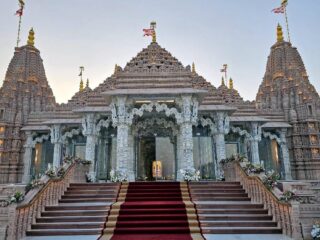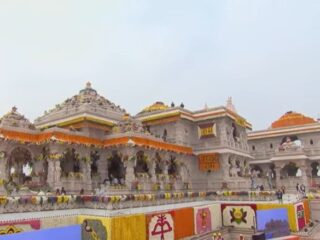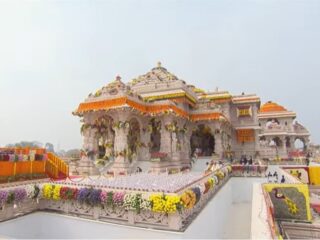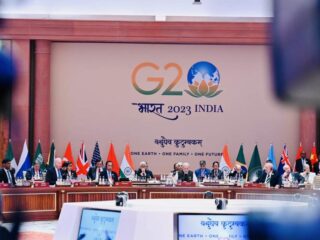Asghar Ali Engineer
(Secular Perspective March 16-31, 2008)
Conversion is a highly sensitive act in today’s communally charged atmosphere. Conversion is being declared a sort of offence now in many states if one converts to any other than Indic religions like Hinduism, Buddhism or Jainism. In a free and democratic India theoretically one should be free to convert to any religion, Indic or otherwise, as religious belief is a matter of conscience and Indian Constitution guarantees freedom of conscience and also freedom of religion.
According to Article 25 of the Constitution, everyone who lives in India, is free to profess, practise and propagate any religion or no religion. Thus it is a citizen’s right to convert to any religion of his choice, Indic or no Indic. Unfortunately the communal forces in this country (even the Congress party in certain cases under fear of public-vote-banr-opinion) are destroying the constitutional spirit by enacting laws banning ‘conversion to non-Indic religions without district magistrate’s permission’.
It is alleged that the Christian missionaries are converting poor dalits and tribals by fraud and inducement and that large number of them are convert to increase Christian population and to reduce Hindu population. This myth is being systematically propagated as another myth of earlier conversion to Islam in the medieval ages at the point of sword was spread.
It has now become highly emotional issue and it is so difficult to debate it objectively and dispassionately. But Fr. Rudolf Heredia has achieved precisely this in his book on conversion Changing Gods – Rethinking Conversion in India, published by the Penguin Books, India. Fr. Heredia discusses various aspects of conversion in a scholarly way. In the first chapter, ‘Many Voices’, he points out “…conversion can destabilize the life of a people, unsettle painfully balanced boundaries, scramble carefully constructed identities.” He further points out, “If the affected people have imagined an exclusive nationhood for themselves, then nationalists will readily see conversions as subversive.”
Majority communities, particularly in democracy, are very sensitive to increasing or decreasing numbers. And this is much more so, if numbers cross certain Lakshman Rekha. And even more so if relations between communities is hostile. Thus Heredia points out, “In situations of sharp and hostile religious boundaries between communities, conversion represents the ultimate betrayal. Yet, even when inter-group or inter-community relationships are not in conflict, conversion movements have the potential to challenge accepted wisdom and renegotiate the status quo. No wonder, proselytizing is illegal in some countries such as Israel, Nepal, and most Muslim countries.”
One can argue these countries listed here which ban conversion are or have not been so far democratic countries. Israel, though it has internal democracy, so far Jews are concerned, is, after all, a Zionist state and any way conversions are not permitted among Jews. It is considered as ethnic religion. Islamic jurists, though not Qur’an, do not allow conversion from Islam to any other religion but allow conversion to Islam in the name of Da’wah (divine mission). But in India a Muslim can also, like others, convert to any other religion. Conversion from Islam to other religion is highly debatable issue among jurists. Many jurists argue, religion being matter of conscience, one cannot be forced to remain Muslim by coercion.
Conversion, it must be borne in mind, is not mere change of religion in most of the cases. It is very complex process and often involves much more than mere change of religion. It is also social, political and cultural as well as personal matter. Also conversion could be based on personal conviction or on some other interests or may be a result of following a leader. There are very few who convert by change of conviction. It requires deeper comparative study of religions, one is converting from and to. Such cases are very rare.
Many conversions are the result of factors other than personal conviction. Some change their religion in protest to some adverse situation. For example, conversion to Islam in Meenakshipuram in 1981 was the result of a dalit boy was being insulted and humiliated by the upper caste Thewars. About 100 dalit families converted to Islam in sheer protest to that humiliation.
In the context of increased political awareness many dalits put forward certain political demands and threaten to convert to Buddhism, if those demands are not met. Thus conversion can also be a political coercion rather than an act of personal conviction. The right wing forces represented by the Sangh Parivar raised a political storm when conversions took place in Meenakshipuram and it was alleged that petro-dollar induced such conversion, for which no proof, of course, was furnished.
Similarly all conversions to Christianity are alleged to be by fraud or inducement. Even those Christian missionaries who provide certain services to the downtrodden dalits and tribals are accused of doing so to convert them. Even an Australian priest, Graham Stanes who was working with lepers in Orissa was burnt alive along with his two sons suspecting him of converting tribals. And on the eve of Christmas in December last communal violence broke out in the Phulpur district of Orissa in which several Christians suffered very badly and some were killed.
The Sangh Parivar, instead of being genuinely concerned about these conversions and engaging with itself meaningfully, tries to politicize the issue in order to derive political benefit. All the BJP ruled states and some Congress ruled ones too have passed laws banning conversion to Christianity and Islam (non-Indic religions) without the prior permission of district magistrate. One will have to prove that no fraud or inducement is involved in conversion.
Rudolf Heredia, however, instead of dealing with such controversial issues, deals deeper with the subject on an entirely scholarly plane. In the chapter on “A Postponed Tryst” he points out, “The debate in the Constituent Assembly on religious conversion illustrates the difficulties in legislating in the sensitive area of freedom of conscience and religious liberty. The Constitution adopted a sound basic secular perspective, though in a statutory document all nuances could not be spelt out, nor all consequences adequately anticipated.” He further says, “Secularism is still an evolving concept and a much contested subject. Many consider it the single most crucial issue in our identity politics today.”
Fr. Heredia is sensitive enough to the question of identity politics today, and conversion has to be placed in that context, if we have to understand its controversial nature today. A pluralist democratic society (multi-religious, multi-cultural and multi-lingual) is riddled with several problems and its politics, be it in India or in any Western country, becomes identity politics.
India’s transition from monarchy to colonial society and from colonial to a democratic society involves very complex processes and secularism, as against what our founding fathers of Constitution thought, is too weak a bonding force in this transition. The way our society has been polarized today indicates importance of primordial identities. Conversions, in such politically charged atmosphere, becomes hypersensitive issue.
As far as our Constitutional rights are concerned any conversion to this or that religion should not matter at all. Indian polity is basically secular democratic polity and fundamental rights of an individual do not depend on his/her religion and so if one converts from one religion to another, it should not matter. However, in practice, it is not that easy in an identity-dominated politics.
So Heredia points out, “The dilemma between individual and community becomes evident when individual and collective rights are not in consonance. Treating all equally could lead to some becoming more equal than others in violation of the rights of more vulnerable individuals. This happens in modernizing societies when the relationships between individuals are unequal, as in caste communities, where lower caste individuals are more deprived.”
And usually collective conversions (or even individual ones) take place from lower castes to non-Indic religion like Christianity or Islam (more often to Islam). Today all controversies are related to conversion of low caste persons or those of tribals. In case of Orissa mainly tribals are involved. These tribals are under attack in many other states like Gujarat, M.P. etc.
The book also discusses personal journeys, those of Ambedkar, Pandita Ramabai etc. in early twentieth century. The chapter on “Personal Journeys” is very scholarly as well as interesting. Pandita Ramabai’s case is of special interest as her conversion, besides being based on conviction (she was great scholar of Hinduism and also studied Christianity), had no political dimension. Her case also shows how complex is the process of conversion, and how social structure plays no less role besides conviction. Ambedkar’s conversion to Buddhism besides being based on personal conviction, had also political dimension. Also, he not only converted himself but more than half a million Dalits also converted with him.
Ambedkar converted to Buddhism though he did consider Islam and Christianity as possible options. Had he converted to any of these religions, his conversion would hardly have been as peaceful as it was in case of Buddhism. Thus conversion is not mere religious but also political, as Heredia points out in the beginning of the very first chapter.
The book is of great interest for scholarly and well-informed debate on the question of conversion to understand its various implications in today’s political context.
——————————————
Centre for Study of Society and Secularism
Mumbai.




